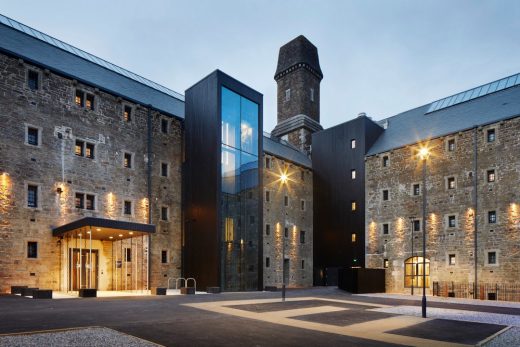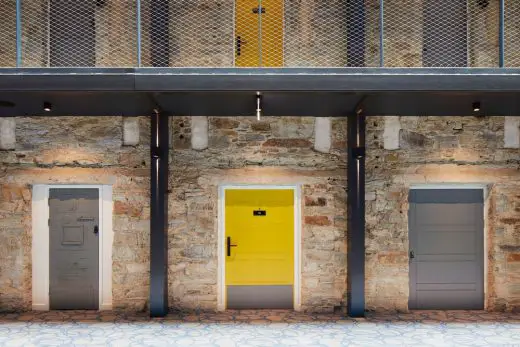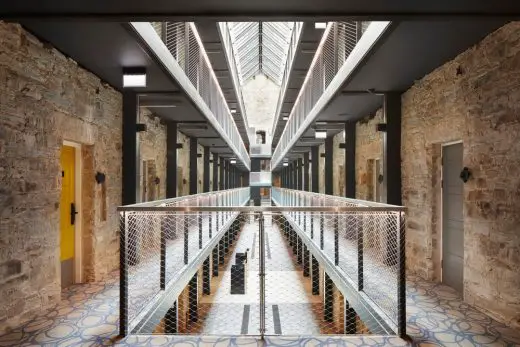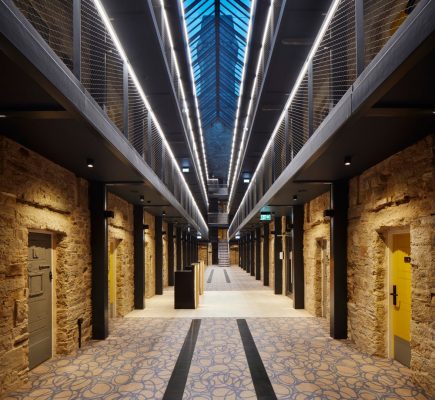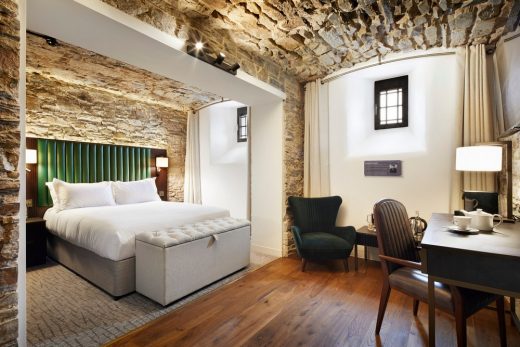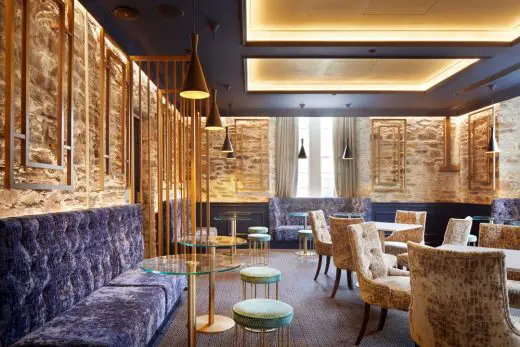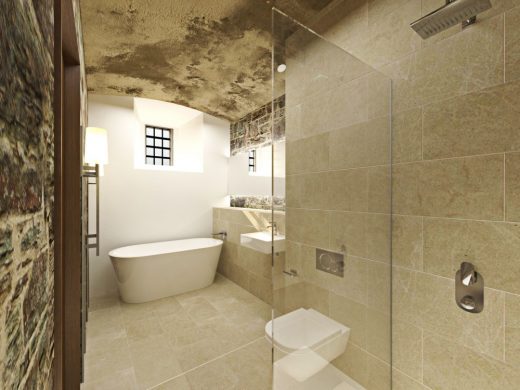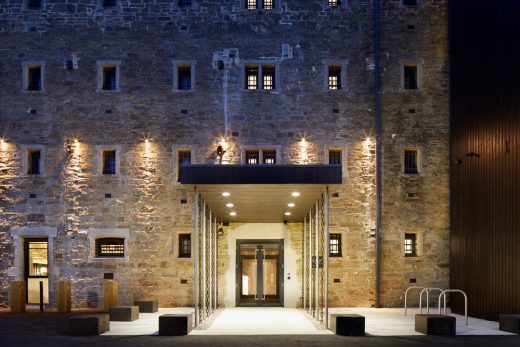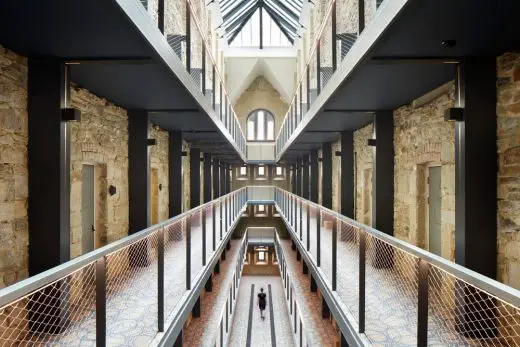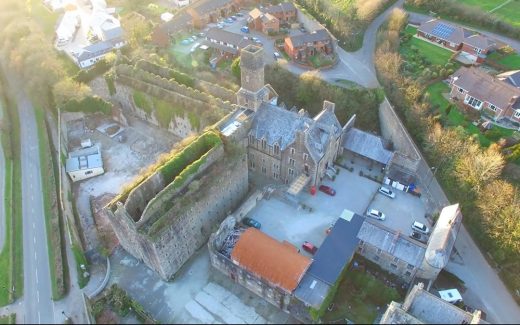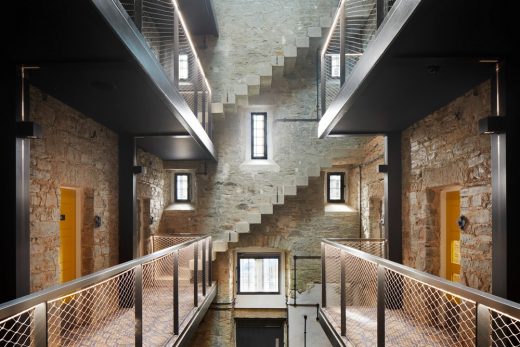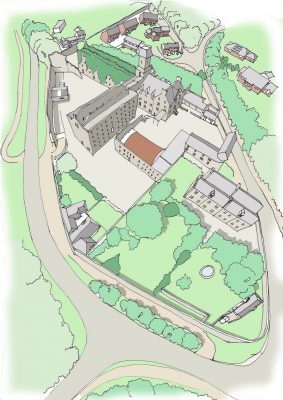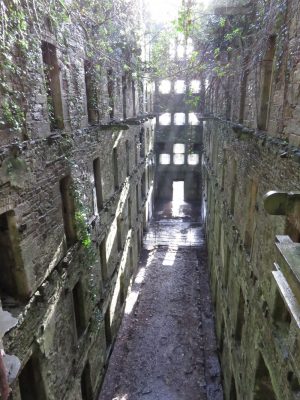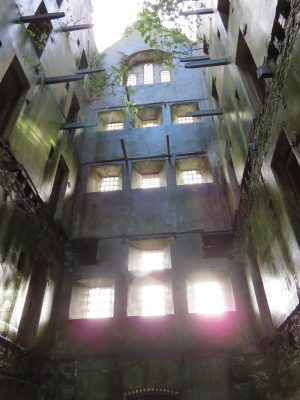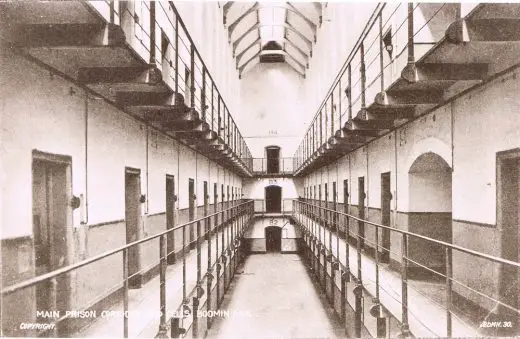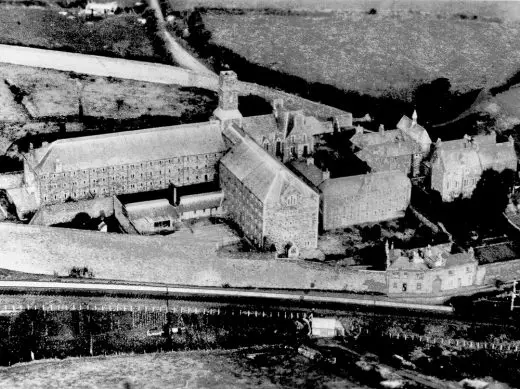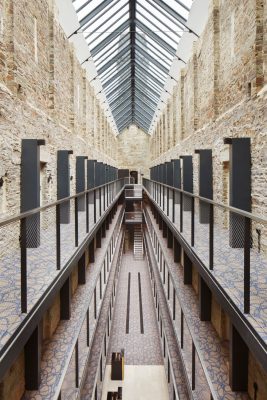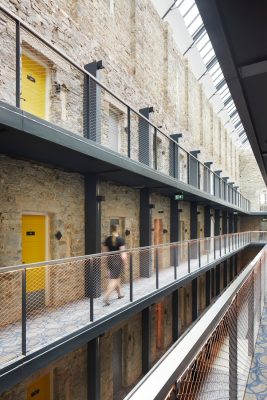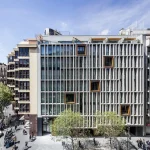Bodmin Jail Hotel, Cornwall Luxury Accommodation Property, Cornish Building Redesign, English Architecture Photos
Bodmin Jail Hotel in Cornwall, England
17 may 2021
Bodmin Jail Hotel, Cornwall
Design: Twelve Architects
Location: Cornwall, England, UK
A derelict 18th century prison that once housed hundreds of criminals and over fifty executions has been restored and reinvented as a luxury boutique hotel within Cornwall, England.
Designed by Twelve Architects, The Bodmin Jail Hotel development which opens to on Monday 17 May 2021, is the second phase of a £50million masterplan project following investment by Mallino Development Group. The first phase saw the modernising and reopening of the adjacent Bodmin Jail attraction in October 2020.
Set over 4 storeys, with 70 boutique rooms, each with their own story to tell, The Bodmin Jail Hotel is a new full sensory accommodation experience that intertwines the imposing original architecture of the three-hundred-year-old jail with creative, contemporary design.
Located in the former Civil and Naval Wings of the jail, each luxury room has been transformed from three prison cells, retaining many of the original features including the existing barred windows, weathered stone walls and ceilings.
Authentic original prison doors salvaged and refurbished from Wandsworth Jail have been fixed into the wall fabric, alongside new doors which provide a modern interpretation to meet hotel requirements.
Twelve Architects relied on historic photos of the jail to bring the central atrium back to its former glory. Before the project began in 2015, much of the jail had completely lost its roof structure, leaving most of the building open to the elements and covered in foliage. Finishes had been stripped over the years and some walls damaged from demolition attempts. Using the principles of the original roof, the atria are now naturally lit through a contemporary full-length skylight.
Twelve’s design philosophy was to create a series of diverse spaces aimed at heightening the unique qualities of the building while creating an immersive visitor experience at every touchpoint.
This multi-sensory experience begins as guests approach the building and witness the dramatic view of the jail tower together with the new sky lights. Once inside the historic perimeter wall, the first experience of containment is felt, and guests are able to soak up the full drama of the impressive and commanding jail wings of the main building.
Visitors are greeted at the lobby which is purposefully narrow to increase the impact of the Civil Wing atrium where they can get their first glimpse of the naturally lit space with reinstated walkways and views of the iconic tower through the skylight.
The hotel rooms themselves have been designed to retain a suggestion of the original cell layout while providing luxurious and comfortable spaces that ensure the guest has made the leap conclusively from historic jail to high spec luxury hotel.
A nod to the Duchy of Cornwall has also been incorporated in the interior design schemes, with the colour scheme reflective of the coat of arms. This sympathetic restoration blends heritage and luxury, celebrating the intrinsic role that the building has played in Cornwall’s past while treating guests to the latest comfort.
Matt Cartwright, Founding Director at Twelve Architects said:
“It has truly been an honour to bring this important historical building back to life. Bodmin Jail is not only an integral part of Cornwall’s past, but UK history having been one of the first modern prisons in the country.
“Despite its ruined condition, we saw the opportunity to create a series of memorable and distinctive spaces. I am immensely proud of what we have created, and we are looking forward to seeing guests’ reactions as they arrive to stay within this magnificent building.”
Bodmin Jail, on the edge of Bodmin Moor in Cornwall was originally built during the reign of King George III in 1779 as part of the Prison Reform by military engineer Sir John Call. The building was a milestone in prison design, based on the plans and ideals of the prison reformer John Howard. It was one of the first modern prisons in the UK with individual cells, segregated male and female areas, hot water and light and airy areas for prisoners to live and work.
As with most old prisons, Bodmin Jail has a dark history. 55 executions took place within its formidable walls, for crimes such as murder and theft. Eight of these were women. Most of these executions were viewed by the public, and thousands would travel specially to witness the hanging.
Lorraine Griffith, Associate Director at Twelve Architects said:
“This has been one of the most amazing and surprising projects I have had the pleasure to work on.
“We remained true to our concept throughout the process with a clear delineation of new interventions into the unique historic structure. This project has exceeded our expectations and we look forward to this new chapter in Bodmin Jail’s history.”
Twelve Architects was appointed by Mallino Development Group in 2015 to transform the Bodmin Jail attraction in Cornwall into an exciting new multi-use visitor destination, modernising the existing visitor experience, retail, food and drink and education facilities and adding a hotel. Twelve Architects has led the design team of the £50 million project alongside teams at Sarner International, Arup, Total Project Integration, Montagu Evans, Plan for Ecology and Astute Fire.
Rob Cox, Managing Director at Mallino Development Group said:
“From our first visit, we could see the potential of this historically important but ultimately ruined building. Working closely with Twelve Architects and the wider project team we were able to develop a clear vision and brief to deliver the breath-taking property that stands before us today. Alongside our recently completed museum we feel that the Hotel finally does justice to this incredible building that sat ruined for so long, we are proud to be part of its rich history and successful future.
“After 5 years of hard work with our fantastic teams of designers and builders, we cannot wait to show people what has been achieved, but this is only the start of the journey and we look forward to adding more to the development in the future to not only enhance the visitor experience further, but also positively impact the local economy.”
The Bodmin Jail Hotel is also home to a restaurant, bistro, an alfresco dining area, cocktail and gin bar, and with a space for up to 300 people, it is the biggest wedding, conference, meetings, and events venue in Cornwall.
Rajesh Joshi, General Manager at The Bodmin Jail Hotel said:
“The opening of The Bodmin Jail Hotel is a proud moment for Cornwall tourism, and is also about celebrating Cornwall’s history. Through painstaking restoration and preservation, Mallino Development Group is returning a national heritage asset to its former glory and creating a cultural showpiece that will attract guests from across the world.”
Project team
• Mallino Developments: Client
Twelve Architects and Masterplanners: Lead Consultant, Architects and Masterplanners
• Arup: Landscape, transport, air quality, ecology, geotechnical/geoenvironmental engineering, structural, mechanical, electrical, and public health (SMEP) building engineering.
• Astute Fire: Fire Engineering
• Montagu Evans: Planning & Heritage Consultants
• TPI: Cost management, project management.
• Sarner International: Attraction Consultants
• Interstate Europe Hotels & Resorts: Hotel operator
• C-Field: Main Contractor
About Twelve Architects
• Twelve Architects is leading the consultant team for the Bodmin Jail project which includes Sarner International, Arup, Total Project Integration, Montagu Evans, Plan for Ecology and Astute Fire to deliver the alteration, extension and change of use of the Grade II listed buildings at Bodmin Jail.
• Twelve Architects is an international architectural practice that creates memorable designs and has experience in a wide range of projects including: master planning, commercial, residential, transport, education, research, culture, leisure, retail, and healthcare.
A brief history of Bodmin Jail:
• Bodmin Jail on the edge of Bodmin Moor in Cornwall was originally built during the reign of King George III in 1779 as part of the Prison Reform, built by military engineer Sir John Call. Building works started in the early 1770s with construction carried out by Napoleonic prisoners of war using 20,000 tonnes of granite quarried from Bodmin Moor.
• The resulting building was a milestone in prison design, based on the plans and ideals of the prison reformer John Howard. It was one of the first modern prisons in the UK with individual cells, segregated male and female areas, hot water and light and airy areas for prisoners to live and work. In addition, prisoners were paid for their work from products sold by the governor.
• Prisoner numbers at Bodmin Jail were relatively low for the first two decades, but this all changed at the end of the Napoleonic Wars in 1815. By 1820, all the cells were filled with multiple occupants, and this overcrowding caused the jail to be extended several times, with new buildings added up to 1850. Changes were needed due to several Acts of Parliament stating total segregation of remand prisoners, convicted prisoners, felons, misdemeanants, debtors, vagrants and, of course, men from women. This resulted in over 20 different classes of prisoners, each needing to be housed in separate sleeping areas and workshops.
• As the needs and interests of society as a whole changed, the prison’s inmate population shifted over the years. It was used largely as a debtor’s prison for many years, but this all changed in 1869 when imprisonment for debt was abolished. From 1887 parts of the jail were used by the Royal Navy, whose occupation lasted until 1922.
• The female prison was closed in 1911 with remaining inmates being transferred to Plymouth. The numbers of prisoners declined dramatically with the outbreak of the war, and the last male prisoner left Bodmin Jail in July 1916. The Jail was finally closed and officially decommissioned in 1927, and 1929 saw its sale to the demolition men.
• As with most old prisons, Bodmin Jail has a dark history. 55 executions took place within its formidable walls, for crimes such as rape, murder and stealing. Eight of these were women. Most of these executions were viewed by the public, and thousands would travel specially to witness the hangings. The first two inmates taken to the gallows were William Lee and John Vanstone, both convicted of burglary. The last person to be hanged at the Jail was William Hampton who, in July 1909, paid the ultimate price for taking the life of his 17-year-old girlfriend after an argument; indeed, he was also the last man to be hanged in Cornwall.
Photos: Twelve Architects
Bodmin Jail Hotel Cornwall building images / information received 170521 from Twelve Architects
Location: Cornwall, south west England, UK
Cornwall Architecture
Tintagel Castle Bridge Concept Winner + Designs
Winning Design by Ney & Partners and William Matthews Associates

image from architect
Tintagel Castle Bridge
Kresen Kernow
Architects: Purcell
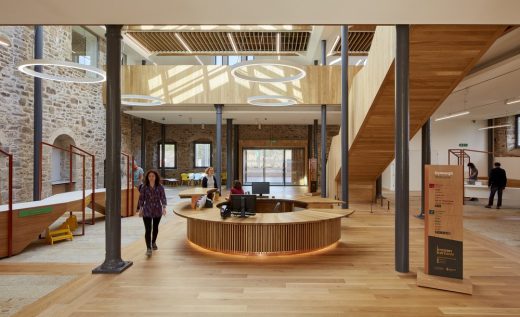
image © Phil Boorman and © Purcell
Kresen Kernow
Eden Hotel
Architects: Tate Harmer
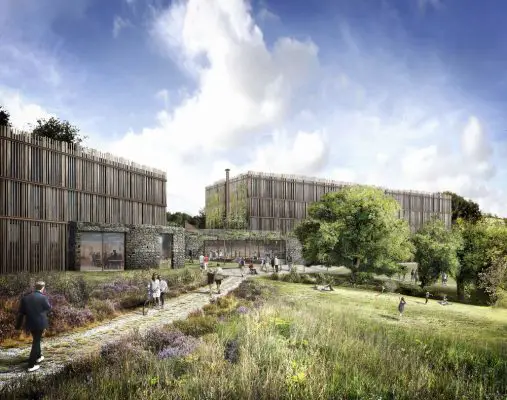
image © AVR London
Eden Hotel in Cornwall
Tintagel Castle Bridge Competition

image from architect
Tintagel Castle Bridge Competition
Cornwall Architecture
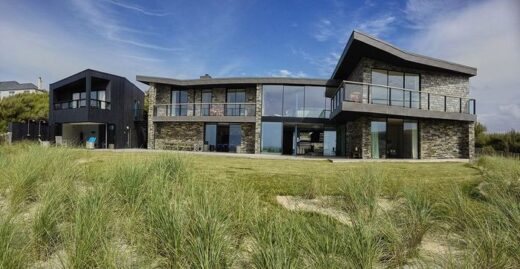
photograph : Mark Ashbee
RIBA Southwest Awards 2016
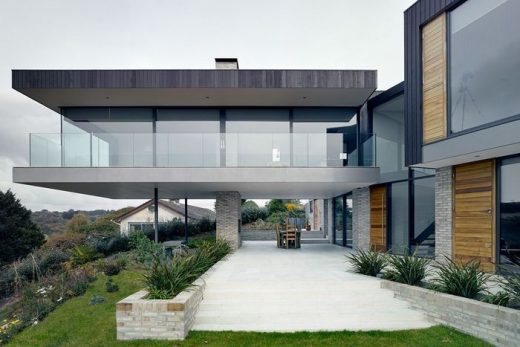
photograph : James Morris
Tate St Ives extension
Tate St Ives
Eden Project
Design: Grimshaw Architects
Eden Project Cornwall
County Architecture adjacent to Cornwall
Comments / photos for the Bodmin Jail Hotel Cornwall Architecture page welcome
Website: Kebony


